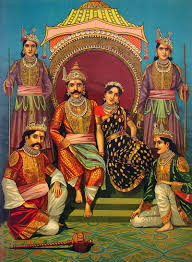Understanding Polyandry: A Unique Marriage Practice

Introduction to Polyandry
Polyandry, a form of marriage where a woman has multiple husbands, remains a fascinating subject in sociocultural studies. While most societies are familiar with polygamy – where a man takes multiple wives – polyandry is less commonly practiced and is often shrouded in misconceptions. Understanding polyandry is critical as it offers insight into gender roles, family structures, and socio-economic factors in various cultures. Recent discussions have risen around polyandry as societies evolve and gender dynamics shift, making it imperative to explore its relevance today.
Historical and Cultural Context
Polyandry has been documented in several cultures throughout history, most notably among the Tibetan, Nepalese, and various Indigenous communities in the Americas. In Tibet, polyandry is often practiced as a means to prevent the fragmentation of agricultural land, allowing brothers to share a single wife in order to keep their land intact. This form of marriage can help ensure the economic stability of families, where sharing resources becomes pivotal for their survival and prosperity.
Modern Perspectives on Polyandry
In contemporary times, a resurgence of interest in polyandry is emerging as discussions around marriage evolve. The feminist movement and changing gender roles have encouraged conversations about different types of relationships that challenge traditional views on monogamy. Advocates argue that polyandrous marriages can provide emotional support and financial security similar to those found in monogamous unions. However, it also confronts challenges like societal acceptance and legal recognition, which differ significantly by region.
Challenges and Legal Implications
Despite its historical prevalence in some cultures, polyandry faces numerous challenges today. Many countries maintain legal frameworks that recognize only monogamous relationships, making legal acknowledgment of polyandry difficult. Furthermore, social acceptance remains low in cultures where monogamous relationships are the norm. Advocacy for the rights of women in polyandrous relationships is crucial for addressing and overcoming these societal barriers.
Conclusion
Polyandry, while a less common form of marriage, highlights significant socio-economic elements and evolving gender dynamics within societies. As discussions surrounding relationships continue to diversify, understanding polyandry can help foster greater acceptance of varied familial structures. In looking forward, the recognition and respect for alternative forms of marriage like polyandry could be vital in promoting gender equality and challenging outdated societal norms. As cultures evolve, so too may our understanding of marriage and the family unit.









